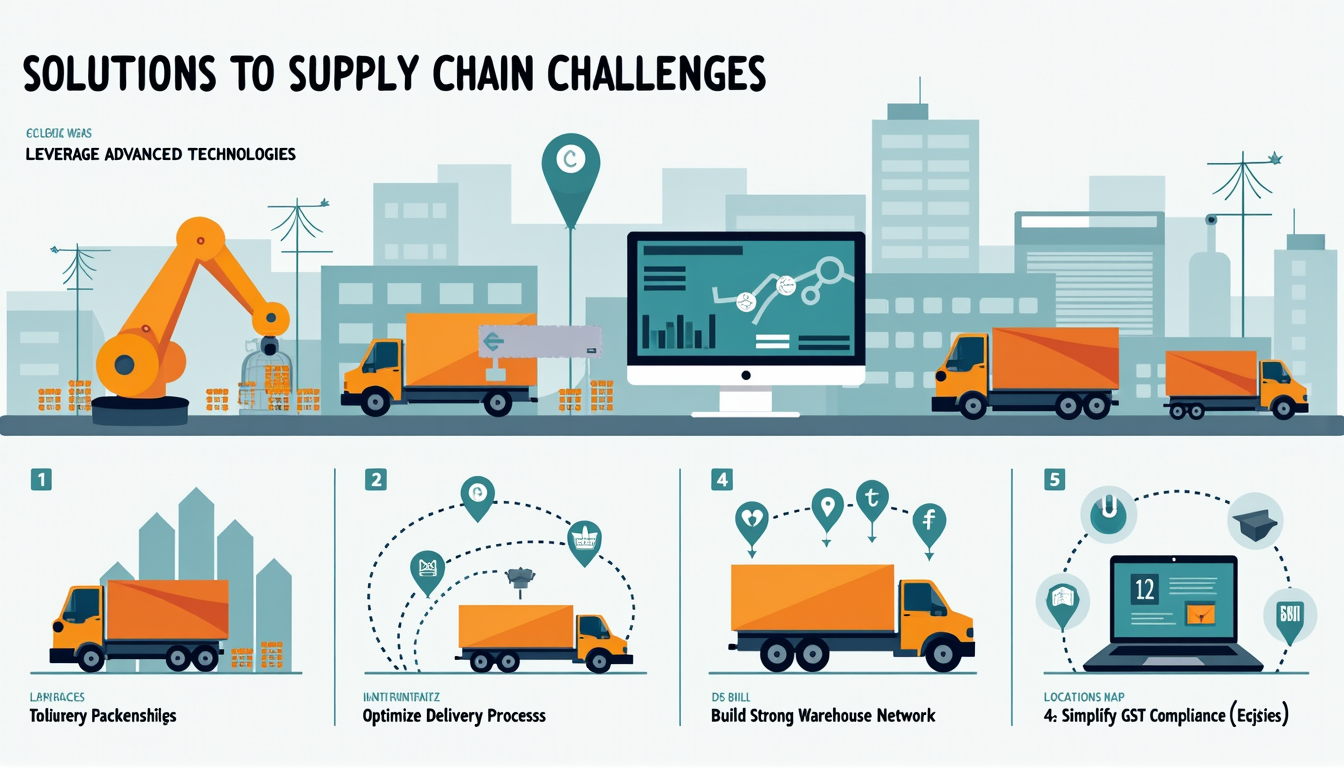Overcoming Supply Chain Challenges in the Indian E-Commerce Sector
India’s e-commerce industry is growing rapidly, fueled by increasing internet access and digital adoption. However, with this growth come significant supply chain challenges in India. From delivery problems to managing return rates in e-commerce, businesses often struggle to provide a seamless shopping experience. Addressing these issues is crucial for ensuring customer satisfaction and driving indian e-commerce growth.
This blog explores the most common online business challenges and practical solutions to tackle them, helping businesses build efficient and reliable supply chains.

Key Supply Chain Challenges in the Indian Online Market
- Delivery Problems :India’s vast geography and varying infrastructure create significant hurdles for timely delivery. Last-mile delivery in India is especially challenging in small-town delivery challenges, where bad roads and limited logistics options slow down operations.
- High Return Rates: The rise of online shoppers has also increased return rates in e-commerce. Products like clothing, electronics, and accessories are commonly returned due to mismatched expectations or quality issues. Managing returns is both time-consuming and expensive for businesses.
- Logistics in India: India’s logistics system lacks the advanced infrastructure seen in other countries like the United States. From outdated warehouses to insufficient transport options, these challenges hinder smooth operations. Warehouse solutions are crucial to overcoming these barriers.
- GST Compliance: For e-commerce businesses, navigating GST compliance is complex and time-consuming. Managing e-way bills, tax filings, and state-wise regulations often creates delays and increases operational costs.
- Last-Mile Delivery: The last-mile delivery in India remains one of the toughest challenges. Reaching remote areas or congested urban spaces can result in delays, missed deliveries, and dissatisfied customers.

Solutions to Supply Chain Challenges
- Leverage Advanced Technologies: The use of advanced technologies like automation and real-time tracking can improve supply chain efficiency:
- Automation: Automating warehouse processes reduces human error and speeds up operations.
- Real-Time Tracking: Keeping customers informed about their order status improves customer engagement and builds trust.
- Data Analytics: Analyzing customer preferences helps businesses manage inventory effectively and minimize delays.
- Optimize Delivery Processes: Improving delivery systems is key to overcoming delivery problems:
- Partner with reliable supply chain managers and logistics providers for a smoother order fulfillment process.
- Use local couriers for small-town delivery challenges to reach customers more efficiently.
- Offer flexible delivery options, such as pick-up points, to ensure timely delivery.
- Build Strong Warehouse Networks: Efficient warehouse solutions are essential for managing inventory and ensuring fast deliveries:
- Establish regional warehouses close to key target markets.
- Adopt a scalable business model to handle growing demand.
- Use smart stocking systems to ensure popular items are always available.
- Simplify GST Compliance: Make tax compliance less of a burden by using technology:
- Implement automated GST billing systems for faster and more accurate tax filings.
- Stay updated on regulations for inter-state e-commerce to avoid delays.
- Streamline the Returns Process: Managing returns is essential for maintaining customer satisfaction and loyalty:
- Create a user-friendly returns system with clear instructions for customers.
- Improve packaging to reduce damage during transit.
- Use data analytics to identify patterns and minimize common return reasons.

The Role of Customer Satisfaction in E-Commerce Success
In India’s competitive e-commerce market, enhancing customer satisfaction is a must for business success. By addressing supply chain issues, businesses can provide a smooth shopping experience that keeps potential customers coming back. Here are a few tips:
- Timely Delivery: Ensure products reach customers as promised to build trust.
- Clear Communication: Keep customers informed about order status and any delays.
- Easy Returns: Simplify the returns process to make it stress-free for customers.
Why Fixing Supply Chain Challenges Matters
The indian online market is expected to grow significantly in the coming years, with more businesses moving online. By addressing supply chain challenges now, businesses can create a strong foundation for long-term success. Whether you run a small ecommerce store or a large online platform, fixing these issues is key to meeting customer expectations and staying ahead in the competitive market.
Conclusion
Overcoming supply chain challenges in India is crucial for businesses aiming to thrive in the e-commerce in India. By using advanced technologies, improving logistics, and streamlining processes like GST compliance and returns, businesses can build a robust supply chain that enhances efficiency and customer satisfaction. With India’s ecommerce business continuing to grow, investing in supply chain improvements today will ensure a brighter future for your brand tomorrow.














